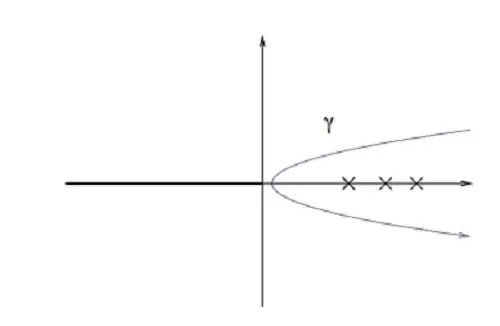I need to perform the following integration:
$I(s) = \int_{\gamma}\text{d}z\ z^{-s} \frac{\text{d}\ln\mathcal{F(z)}}{\text{d}z}$,
where $\mathcal{F(z)}$ is analytic everywhere on the complex plane.
For the purpose of integration, the branch cut which is implied by $z^{-s}$ is chosen to be on the negative real $z-$axis, as follows.
I understand that the function $z^{-s}$ is multivalued, but that function has $s$ complex roots over the complex plane, so should we not choose a branch that corresponds to an angle of $\frac{2\pi}{s}$ of the complex plane?
